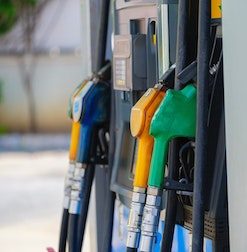How Co-Processing Refineries in Canada Get Credits under the CFR
Canada’s Clean Fuel Regulations Requires ASTM D6866 Testing for Co-Processing Refineries
Through the Clean Fuel Regulations (CFR), the Government of Canada aims to reduce pollution by 2030 by decreasing the carbon intensity (CI) of gasoline and diesel used in the country. The Canadian Ministry of Environment and Climate Change published a Quantification Method (QM) for co-processing in refineries under the CFR. The QM requires ASTM D6866 testing to measure the biogenic content of the co-processed feedstocks used and the low-CI fuels produced in registered projects.

Credits Market for Fuel Suppliers
The objective of the CFR is to require that producers and importers reduce the carbon intensity of diesel and gasoline used in Canada by about 15% (or below 2016 levels) by 2030. The carbon intensity of a fuel is a measure of the greenhouse gas emitted from the extraction, refining, distribution, and use of such fuel.
Through the CFR, the government will increase incentives for the development and adoption of clean fuels, technologies and processes. The CRF will establish a credits market wherein producers and importers of gasoline and diesel must create or buy credits to comply with the reduction requirements. Extra credits can be sold or used in later years.
How Co-Processing Refineries Get Credits
Registered refineries can follow the QM to obtain credits for the production of low CI fuels under a co-processing CO₂ Emissions Reduction project. The QM is applicable to co-processing done in either a hydrotreater or a fluid catalytic cracker. All projects must be in Canada.
Projects are required to measure the biogenic content of samples from each fuel, product, and hydrocarbon co-product via ASTM D6866 testing. The biogenic content and CI of the co-processed low-CI fuel, co-processed low-CI product, and co-product produced for each fuel pathway must be determined. The samples’ results must also be corrected for the percent modern carbon of the low-CI feedstock and a blank correction of a petroleum-only fuel with no percent modern carbon should be subtracted from each test result.
The QM sets the frequency at which different types of projects should test based on whether they use a hydrotreater or FCC. Co-processing benchmarks differ before and after February 2025. After January 31, 2025, ASTM D6866 testing will be required more frequently.
Emissions reductions and corresponding credits are quantified based on the amount of co-processed low-CI fuels produced and their reduced lifecycle CI, using the biogenic content results obtained through ASTM D6866 testing.
Sources:
- Canada’s Ministry of Environment and Climate Change: What are the Clean Fuel Regulations?
- Clean Fuel Regulations: Quantification Method for Co-processing in Refineries
You might also be interested in these Beta articles:
Photo credit: Engin Akyurt (Pexels.com)

This entry was posted on Thursday, January 19th, 2023 and is filed under Biogenic Carbon Testing of Biofuels .